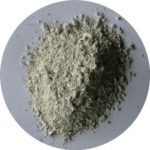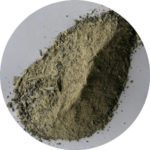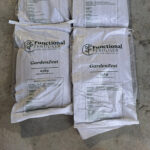By Peter Burton
Soil carbon seems to have been given the ‘too hard to measure’ label, and therefore given little importance in the debate on the future of farming, and that’s wrong because it is fundamental to our survival.
The most valued soils are the deepest blackest soils because they are the most productive. In any farming district land close to river mouths, or deep volcanic soils, are the most sought after and expensive.
Peat soils are a little different, certainly carbon rich, and capable of exceptional production when given the management they deserve.
Carbon exists in various forms in the soil. Carbon from recently deposited dung, old leaf and root, can be quite easily lost, however as the digestion process proceeds it becomes more tightly held in the soil. Humus, by definition, is what remains after the digestion process is complete and carbon in this form is very stable and difficult to lose.
The reason high carbon content soils are sought after is their ability to produce food for people. They hold more moisture and nutrient releasing it steadily over time as required by plants ensuring increased production of higher quality.
Deep black soils are also more friable and less prone to compaction, which allows plant roots to penetrate further accessing the moisture and nutrient necessary for strong healthy growth even during periods of dry weather.
The quickest way to sequester carbon is under permanent grazed pasture. Actively growing plants suck in carbon dioxide, release oxygen to the atmosphere with the carbon portion stored in the soil.
It’s been fascinating over the last thirty years observing Central Plateau naturally sandy soils with little top soil develop into highly productive pastoral land capable of over 14 tonne of dry matter per hectare annually.
Animals are and remain an essential component in the cycling of carbon, the building of topsoil, and the development of humus, thereby providing a highly effective filter for water entering the aquifers.
Without grazing, the speed of nutrient cycling slows dramatically with little carbon sequestered. The volcanic ash typical of that deposited by Tarawera and Taupo eruptions would be exposed to the full force of the climate with increased likelihood of widespread erosion.
It is as the result of decades of intensive grazing that topsoil has been built, food produced, and communities developed, yet pastoral farmers are viewed by many as environmental vandals. Through regulation many are now feeling isolated from and rejected by the wider community.
How could this have happened if pastoral farming is the best means of reducing atmospheric carbon dioxide, with nitrous oxide and methane becoming environmentally insignificant?
Could there be another influence that as yet hasn’t been fully explored? Our view is that the consequences of 400,000 tonnes of urea applied annually to our most productive land ought to be thoroughly examined.
If, as is almost certainly the case, pasture production in the Waikato has steadily declined from around 18 t DM/ha prior to the use of nitrogen to around 14 tonne, then something is amiss, and in our view excess nitrogen is the culprit.
The practise of regularly applying urea started in the late 1980’s. In thirty years pasture production in this instance has declined by 22%, and could the loss of soil carbon be responsible?
Research by Louis Schipper and his team at Waikato University has shown that in intensive lowland livestock systems (e.g.dairying) soils have lost organic matter by an average of 1 tonne carbon/ha/yr over the last 20 – 30 years.
More recently research by Landcare Research has shown that all irrigated land throughout the country is losing carbon.
It is being argued by some that as profitable pastoral farming is now shown to have an expiry date, in order to preserve the existing carbon reserves, animals should be removed, and trees planted. The consequences to communities and national income would be incomprehensible.
However, there is a home-grown solution that when embraced will position this country once again at the leading edge of sustainable pastoral farming.
It’s been practised by farmers throughout the country for over 15 years, and the data supporting its effectiveness is not disputed. More importantly these farmers are enjoying steadily increasing production and lower overall costs.
The soil fertility part of Functional Farming Systems is, to some, surprisingly conventional. Phosphorus, sulphur, and potassium where required are non-negotiable with inputs calculated on historic MAF removal data.
The difference is that nitrogen fertiliser is not a requirement, although a little may be used strategically. Pasture and crop yield are often 30% higher with plants far more pest and disease resistant.
To maximise the benefits, changes to grazing management are required. Calving and lambing dates tend to be a little later than the norm with high-quality supplement, made from genuine summer surplus, used to plug the early season feed deficit.
Per animal production lifts due to the increased energy content of the feed, nitrate poisoning is unheard of, and animal fertility gains are ongoing.
With Nitrate-N losses to ground water measured at 70% less than those from a conventional high-N operation, the system provides pastoral farmers with the ability to secure their long-term future, leaving their land in a healthier more productive state for those that follow.
For more information call Peter on 0800 843 809.




